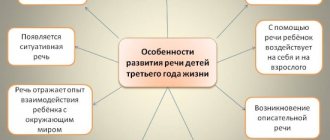Our vocal apparatus performs an important communicative function: thanks to our voice, we communicate with others, convey important information to them, and some people associate the ability to speak or sing with their professional activities.
The state when the voice goes down or disappears cannot be called pleasant or comfortable. The problem of the missing voice is especially acute for those who have chosen the so-called speech profession: teachers, singers, announcers, etc.: along with the missing voice comes temporary disability. Therefore, a person’s desire to urgently restore his vocal cords is quite logical.
In medicine, a condition where the voice is lost or diminished is called aphonia.
There are many reasons for aphonia, and they are not always associated with a cold, as is commonly believed. Accordingly, approaches to treating a dry voice also differ.
Why does the voice shrink? What are the causes of hoarse vocal cords? What quickly restores a dry voice? How to urgently restore the ability to fully speak or sing? Quick voice restoration is the topic of our new article.
Make an appointment right now!
Call us by phone or use the feedback form
Sign up
Reasons why the voice disappears
The voice may not completely disappear (this is called dysphonia); more often we are faced with hoarseness or hoarseness. Complete aphonia with the ability to speak in a whisper is observed relatively rarely. Causes of this symptom:
- infection - most often voice changes occur with tonsillitis, pharyngitis, laryngitis;
- anomaly of the development of the larynx - in this case, dysphonia is detected during the neonatal period;
- allergies - swelling of the larynx and vocal cords;
- benign and malignant tumors of the larynx;
- myasthenia gravis;
- hormonal diseases;
- injuries (a long scream is also an injury);
- damage to the cranial nerves or their centers, etc.
In all these cases, the voice may become nasal, hoarse, quiet, hoarse, or completely disappear.
Phonopedia
Classes are conducted by a speech therapist who has completed specialization in phoniatrics and phonopedia - phonopedist . Phonopedic training includes breathing, voice and relaxation exercises. Their goal is to activate the internal muscles of the larynx, form costo-abdominal breathing, coordinate phonation and breathing, and relieve excessive tension. These workouts have no contraindications or side effects. Voice restoration is based on the body's compensatory capabilities. The duration of the course is from 2 to 4 months.
Along with traditional phonopedic classes, remote ones , which makes it possible to provide specialized speech therapy assistance to such patients in all regions and corners of the Russian Federation. Our experience in managing patients with paresis and paralysis of the larynx shows that all patients after rehabilitation training had a positive result, which consisted of an improvement in the laryngoscopic picture, an increase in the tonal and dynamic range, time of maximum phonation, voice endurance, improvement in timbre characteristics, and sound stability. In 48% of patients, not only the quality of the voice improved, but also the mobility of the vocal fold was restored.
Corrective and pedagogical methods of voice restoration are highly effective and have no contraindications methods for the rehabilitation of patients with paresis and paralysis of the larynx.
How to treat a missing voice
In this situation, much depends on the cause of dysphonia or aphonia. The age of the patient should also be taken into account - treating a hoarse voice in an adult will have to be different than restoring it in a child: treatment methods, doses of drugs, and the drugs themselves are different.
Infectious causes
If it is already known that the cause is a cold, the missing voice should be treated in a comprehensive manner. First of all, you need to create conditions of high humidity - local immune factors are better at killing viruses on the mucous membrane that is moistened from the outside. Due to inflammation at the beginning of the process, it dries out, which is why the voice disappears. The humidity in the apartment is increased with the help of special air humidifiers, although a wet sheet thrown over the heating radiator will do. You can even place a bowl of water in the room. For the same purpose, it is recommended to drink plenty of warm drinks (cold and hot drinks can increase swelling of the mucous membrane of the respiratory tract).
You can also humidify the inhaled air through inhalation. It is ideal to use saline nebulizers for 10-15 minutes. It is also possible to simply inhale the steam of potato broth or soda-salt steam inhalation (you just need to let the water cool a little so that the steam is not hot).
If an adult or child has a hoarse voice, be sure to establish a voice rest regime. A complete refusal to talk (in emergency cases, whispering is allowed) will allow the vocal cords to “rest” and recover faster.
As for medications, you can take any mucus-thinning drugs, starting with regular thermopsis tablets and ending with ambroxol, bromhexine, ACC and the like. In case of a bacterial infection, it is necessary to prescribe antibiotics (a doctor will be able to distinguish bacterial inflammation from viral inflammation; you can make an appointment on our website dobrobut.com).
Non-infectious causes
Treatment is usually carried out on an outpatient basis. Hospitalization is recommended when other signs of illness develop along with a change in voice. Breathing disorders and increased intoxication are alarming symptoms that need to be treated in a hospital setting. In addition, hospitalization is indicated for cancer, myasthenia gravis, chemical and thermal burns of the upper respiratory tract, severe forms of allergies, and laryngeal injuries. In these cases, intensive care, resuscitation measures, and even surgical treatment may be necessary. The following medications can be used in therapy:
- corticosteroids (prednisolone, dexamethasone) to suppress allergies or excessive immune reactions to a foreign agent;
- desensitizing antihistamines (for the same purpose);
- vitamins;
- sedatives.
If signs of suffocation occur simultaneously, the patient can be intubated and connected to an artificial respiration apparatus, while the inhaled air is enriched with oxygen and humidified.
If severe swelling of the larynx develops, a cricoconicotomy or tracheotomy is performed (in other words, the throat is cut and a breathing tube is inserted into it), which will allow the patient to breathe despite the disease blocking the windpipe.
Diagnostics
The appearance of hoarseness requires an immediate visit to an otolaryngologist to determine the cause of the dysphonic disorder. If laryngeal diseases are excluded, in-depth diagnostics may be required with the involvement of other specialists: endocrinologist, neurologist, oncologist.
- Endoscopy.
An instrumental examination begins with laryngoscopy - this makes it possible to detect inflammatory changes in the mucous membrane, the presence of neoplasms, and foreign bodies. In order to assess the function of the vocal folds, the study is supplemented with stroboscopy. If the respiratory tract and gastrointestinal tract are involved in the pathological process, bronchoscopy and endoscopy are performed. - EPI methods.
Electrophysiological diagnostics are indicated for dysfunction of the vocal apparatus caused by neuromuscular disorders. Electroglottography and electromyography are performed. EPI allows you to assess the motor and contractile function of the laryngeal muscles. - X-ray examination.
X-ray diagnostics are mainly required to visualize space-occupying lesions in the neck and chest cavity. If oncological processes causing hoarseness are suspected, X-ray of the lungs, CT of the larynx, and MRI of the mediastinum are prescribed. - Sonography.
To exclude compression of nerve structures by enlarged lymph nodes and tumor conglomerates, an ultrasound scan of the thyroid gland and mediastinal organs is performed. If necessary, a puncture biopsy of detected tumors is performed under ultrasound navigation.
Endoscopy of the larynx
Treatments for hoarse voice in infants
In infants, the voice may become hoarse due to infection or prolonged crying. It is extremely undesirable to treat the infection on your own, since while it is not difficult to cope with an ordinary virus, then with diphtheria, in which the voice also changes, you cannot do without a doctor. The doctor will prescribe remedies for treating a hoarse voice in an infant.
Be prepared that it will not be possible to quickly restore a hoarse voice. With any form of the disease, it will take several days until it begins to return, and at first the voice will be rattling and then return to normal timbre.
The cause of a hoarse voice without signs of a cold should be determined by a doctor. Cancer or hormonal disorders cannot be easily detected, and the consequences can be extremely serious.
Related services: Consultation with a pediatric ENT specialist
How long does it take to restore speech after a stroke?
The rehabilitation process usually takes from several months to several years - it all depends on whether the speech centers were severely damaged. Common disturbances in aphasia disappear on average 3-6 months after the crisis.
If the stroke was suffered in a severe form, then the possibility of restoring lost speech skills is about 55%. With moderate severity, it is guaranteed that 75% of the damage can be restored, with mild damage – up to 90%.
The most favorable prognosis is observed in patients who have suffered motor aphasia. In young people, speech is restored almost completely; in older people, minor impairments may remain in the form of unclear pronunciation of individual sounds.
Do adults need this?
Speech muscles are the basis of our speech, the key to its quality, attractiveness, and the basis for the ability to exert influence with words. Few people want to listen to a person who has a lisp, burr or stutter. All these problems are in our mouths, and let such a literal statement not scare anyone. After all, a person who cannot speak fully and beautifully suffers from poor muscle development. For adults, this problem will become especially acute if the choice of profession falls on a teacher, announcer, actor, or marketer.
Dreams of becoming a successful leader will fade into oblivion if your speech is incoherent and unattractive.
Carrot broth
When you need to quickly decide how to restore a shrunken voice, you should use carrots. To prepare the remedy, you need to clean three of these plants, place them in a saucepan with 1 liter of milk and cook until fully prepared.
The milk is then filtered and drunk warm throughout the day. While the ligaments are being restored, you must avoid drinks that contain caffeine.
To consolidate the therapeutic effect, you can use another recipe. Freshly squeezed carrot juice is diluted in warm milk - ratio 3:1. You need to drink 130 g of this product three times a day.
Gogol-mogol
For this product you will need the following products:
- Honey or sugar - 2 tbsp. l.
- Chicken eggs - 2 pcs.
- Milk - 100 ml.
You need to separate the yolks, add honey to them and beat with a mixer. After this, heated milk is poured into the resulting mixture. The whites are whipped with sugar until they form a strong foam and are added to the drink. This eggnog should be drunk warm.
If you want to enrich the taste of the drink, you can add a little orange juice, rum or cognac.
Milk with anise and honey
When studying information on how to restore a hoarse voice, you should definitely pay attention to this recipe. The preparation of the remedy is simple:
- a glass of goat or cow milk is heated to 47 degrees;
- add half tsp. butter and a whole spoonful of honey;
- if you have a cough, you can add a pinch of soda to a glass of milk.
You need to drink this milk three times a day for 5 days.
The recipe with anise is slightly different:
- you need to bring a glass of milk to a boil, to which anise has been added (1 tbsp.);
- Add a spoonful of honey to the warm mixture and mix everything together.
You need to take this drink every 2 hours, 2 tbsp. l.
Healing herbs
If you need to find a way to restore a broken voice at home, then it’s definitely worth considering traditional medicine methods.
There are several herbs and plants that have long been used to treat ligaments:
- Tatarnik. Restores soft tissues, eliminates swelling and kills harmful microflora. To treat the larynx, you need to pour one tablespoon of this plant with boiling water (500 ml) and leave for 2-3 hours. The finished product is taken once for 5-6 days. You need to drink one glass of infusion daily, without haste, taking small sips. After taking tartar, you should rinse your throat and mouth with a small amount of olive oil.
- Lungwort. This plant contains saponins and tannins, which moisturize and soften ligaments. The use of lungwort infusion gives an anti-inflammatory, regenerative and antimicrobial effect. To prepare the product, you need to pour 15 g of dry crushed herbs into a thermos or porcelain teapot and pour 500 g of boiling water. After an hour and a half, the infusion should be filtered and then taken 150 g three times a day half an hour before meals. This treatment lasts 10 days.
- Dill. You can get a noticeable restorative effect by inhaling the vapors of this plant. For the procedure, you need to put the plant in a porcelain teapot and pour 500 g of boiling water. You need to inhale the vapors through the spout of the kettle when the broth has cooled to 55 degrees. The result is an inhalation effect. You can repeat the procedure twice a day for 5 days.
- Althea. It is used as an infusion, for the preparation of which you need to pour a glass of boiling water over a tablespoon of herbs. The product is infused for 30 minutes and taken every 2.5 hours throughout the day.
- Bedrenets. Used as a tincture. To prepare it, you need to place 15 g of plant root in 50 ml of vodka or homemade moonshine. The product is infused for 3 weeks, after which it is taken three times a day, 15 drops. The course lasts from a week to two.
It must be remembered that all tinctures are prepared and stored in a cool, dry place.
Inhalations
If you are not allergic to vapors of essential oils, then they should be actively used. After such inhalations, the immune system is strengthened and inflammation of the vocal cords is relieved. For one procedure, a few drops of oil and a glass of hot water will be enough. To get a lasting effect, you need to breathe in steam 3-4 times a day.
To treat the vocal cords with steam, you can use not only essential oils, but also medicinal herbs and pharmaceuticals. In the case of pharmaceutical products, it is better to use a nebulizer - a special device for high-quality spraying of medicinal products.
It is important to remember that inhalations should not be used for laryngitis in the acute stage.











